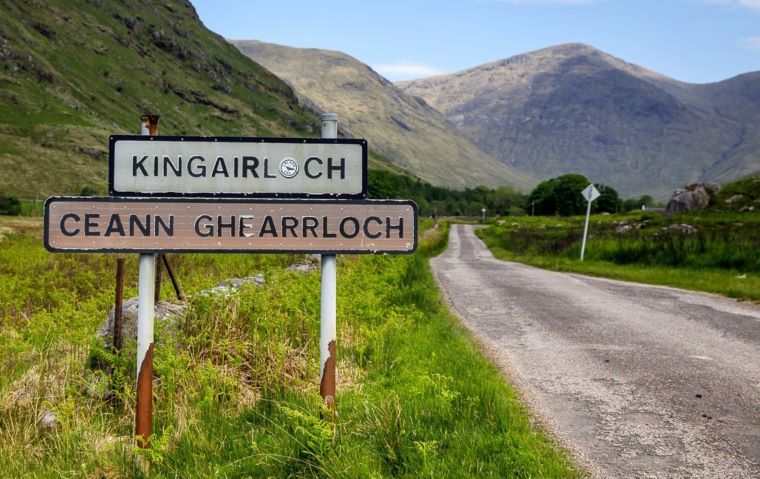
Morvern Lines
14 June 2023
Guest newsletter contributor and local historian Iain Thornber shares his knowledge on the dry-stone walls found throughout Kingairloch Estate and beyond.
Apparently, we are all archaeologists now but I wonder how much simple archaeology we pass every day without giving it a second glance? Top of the list must be dry-stone walls and dykes. To qualify for the term ‘dry-stone dyke’, the wall has be free of mortar and rely on good construction for its strength and durability. The style of a dyke varies throughout the country and depends on the nature of the stone and the purpose for which it is built. In general, freestanding dykes (as opposed to retaining dykes) are built of two “skins” of stone with a batter, which tapers the dyke evenly on both sides from ground level to the top. These skins are tied together by stone laid length-ways into the wall.
Stone walls are a feature of Argyll and are of interest because of their construction and the contribution they make to the local character of the landscape. Many were built as estate, croft and field boundaries, sheep fanks and enclosures for stock and shelter. Dykes divide fields with differing soil types and therefore different management regimes. For example head, or hill dykes, form the boundary between inbye land and rough grazings. They can show periods of land improvement, or define drove roads, once important for stock-movement. The way dykes are built and their overall pattern in the wider landscape, reflects local geology, quarrying history, crafts and traditions.
Dry-stone walling in Argyll stretches back thousands of years, to the chambered cairns of Nether Largie, Achnacree and Camas na Gael (Ardnamurchan) and the timber-laced hill forts and duns that were the centres of power of local chieftains at Rahoy, Kilmore and Kerrera and the Iron Age brochs on Lismore.
John Campbell, 5th Duke of Argyll (1723-1806), who owned huge swathes of Argyll, including much of Mull, Morvern, Lismore, Coll, Tiree and Kintyre, was an agricultural reformer, improver and farmer on a grand scale and recognised the value of enclosing land especially round valuable oak woods. His interest and drive resulted in the building of thousands of miles of dry-stone walls. Many of his dykers, or cowans as they were more commonly called, were local men but, as the land-hungry flock-masters from the Borders poured into the Highlands with their cheviot sheep, they brought their own dykers who used different techniques and styles. There are places where both can still be seen side by side. The greatest dyke-building period was from 1750 to 1850, following the Enclosure Acts.
How much did it cost to build a new dry-stone wall in Duke John’s day? In a contract between his chamberlain and two Morvern dyke-builders, Angus and Archibald MacInnes, dated 6 July 1786, the agreed rate for erecting one, four foot high and three foot broad at the foundation, 18″ at the top and finished off with two divots, was 2/6 a yard (12.5p). That might seem cheap, but if you take into account much of the material for a new wall had to be prised out of the ground and carried some distance in all weathers, it was hard, back-breaking work. Little wonder the same length today could cost £150 or more per yard.
With the advent of wire, which was cheaper, easier and quicker to use, dry-stone dyking took a back seat for a while. Now, as interest in environmental issues increases, it is prospering and sits comfortably within these parameters, being a sustainable product made from natural materials. Although initially appearing more expensive than fencing, with regular maintenance a dry-stone wall could stand for 100 years and at the same time provide shelter and habitat for a wide variety of animals, birds, slow-worms, mosses and other plants.
But where are today’s dykers? The Dry-stone Walling Association of Great Britain (DSWA) was founded in 1968 to promote a greater understanding and knowledge about the traditional craft of dry-stone walling and to encourage its repair and maintenance. DSWA operate a nationally accredited craftsman certification scheme listing a number of professional members throughout Scotland. Morvern itself has been fortunate in having had some excellent resident dykers in modern times.
‘The Dry-stone Dyke’
Hammer dress to clear the line
A dry-stone dyke is masculine
And shows the world a rugged face
Where pretty smoothness has no place
Levellings – must not be high
The course above must bind and tie
Directly on the stones below
These are things all men must know
Wedge the horizontal spaces
Build with care the upright places
Gravity is not our friend
So use a wedge’s thicker end
Never let a chance go by
To dress your work to please your eye
For every gap there is a pin
As you find them, tap them in
When the cope stones are in place
The rural scene our work shall grace
Enduring as its weathered stones
When we are nought but crumbling bones’.
The above poem was written by Murdo MacAskill who was known as the ‘Bard of Strathdearn’. He was the paternal grandfather of a dry-stone dyker (also Murdo) from nearby Glenuig. A lovely illustration of the heart and skill that goes into building a dry-stone dyke.
It is sad to see so many old and spectacular field dykes in Morvern and elsewhere in Argyll, when they are damaged by machinery or animals, being patched by post and wire or, worse still, wooden pallets. It is a pleasure to see the process started for restoration and installation of new dykes at Kingairloch.
Iain Thornber
Local Historian



